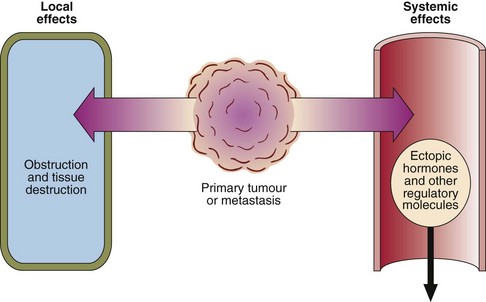69 In Western societies one death in five is caused by cancer. The effects of tumour growth may be local or systemic (Fig 69.1), e.g. obstruction of blood vessels, lymphatics or ducts, damage to nerves, effusions, bleeding, infection, necrosis of surrounding tissue and eventual death of the patient. The cancer cells may secrete toxins locally or into the general circulation. Both endocrine and non-endocrine tumours may secrete hormones or other regulatory molecules. A tumour marker is any substance that can be related to the presence or progress of a tumour (see pp. 140–141).
Cancer and its consequences
Stay updated, free articles. Join our Telegram channel

Full access? Get Clinical Tree








